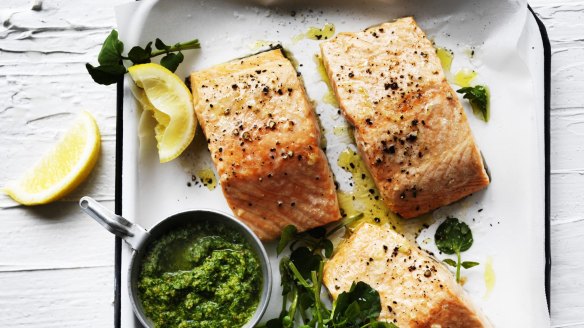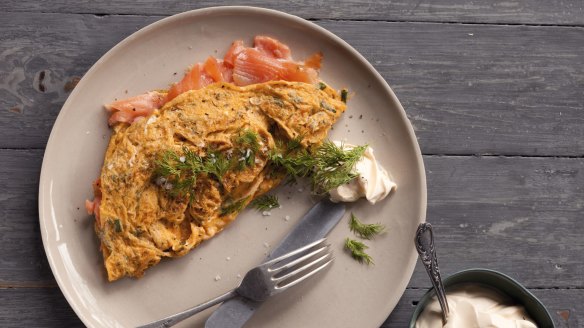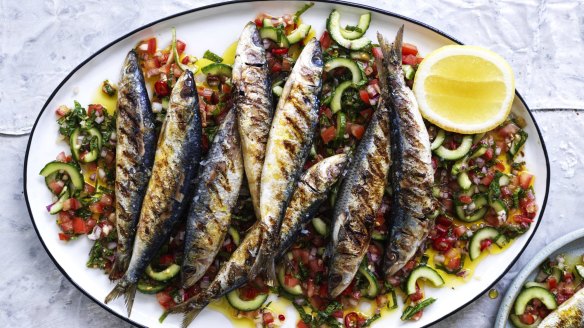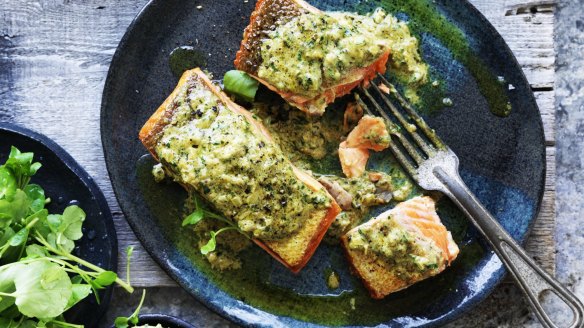Why so many Australians have low vitamin D and what you can do about it

- Adam Liaw's roast salmon with macadamia and rocket pesto recipe
- Recipe collection: 20 recipes to boost your vitamin D
The last couple of years have been challenging to say the least – a global pandemic, ongoing isolations, a halt on international travel and pretty ordinary weather have all meant we are generally spending a lot more time at home.
The follow-on effect of this, especially in the southern states, has meant we have been exposed to a lot less sunlight, a factor that has significant implications for our vitamin D levels.
Alarming new evidence from Curtin University has shown that up to 95 per cent of Australians have a low intake of vitamin D, which has serious implications for both our physical and psychological health especially as we move into winter.

What is vitamin D?
Vitamin D is a fat-soluble vitamin that plays a key role in the absorption of calcium in the body. Low vitamin D levels have also been linked to a number of other health issues including neurological dysfunction, heart disease, diabetes and some types of cancers, although research into these associated disease states is in its early stages.
Younger people have the lowest level of vitamin D intakes, with women more likely to have lower intakes than men.
The biggest issue with low levels of vitamin D over time is that it puts our bone health at considerable risk. Low vitamin D results in high bone turnover, reduced bone density and an increased risk of fractures over time, especially in older people.
On a daily basis low vitamin D levels are linked to low mood, feelings of fatigue, joint and muscle pain and muscle weakness.

How do we get vitamin D?
Researchers from Curtin University have complied the first comprehensive database of the vitamin D content of Australian foods and found that most Australians consume less than half the daily recommended intake of vitamin D.
Leading researcher Ellie Dunlop says that there are a handful of key foods to focus on when it comes to ticking the box on our daily intake of vitamin D.
"Oily fish, including Atlantic salmon and sardines, are the richest food sources of vitamin D, with two serves a week recommended," she says.
"Other sources include eggs, white fish, some meats and a small number of fortified foods."
You can also find vitamin D in mushrooms but there is a catch – they need to be exposed to direct sunlight for a good period of time to convert the natural vitamin D into its active form. Some supermarkets and specialty stores sell special "vitamin D mushrooms" that have been exposed to UV.

Don't forget the sunlight
Sunlight is the primary source of vitamin D for most people. Vitamin D is produced in the body when our skin cells are exposed to ultraviolet B (UVB) light that we get from the sun.
You do not need to sit in the sun for hours to get the amounts of vitamin D we need on a regular basis. Rather it depends on how dark your skin is, and the parts of skin on the body that are actually exposed to the sunlight.
The average person will need between five to 10 minutes of sunlight exposure in summer, versus up to 30 minutes in winter, while darker skin types may require more.
While we often expose our arms, larger parts of our body such as our chest, tummy or back will benefit from sun exposure thanks to their larger surface areas.

What are the signs my vitamin D may be low?
You cannot diagnose your own vitamin D deficiency. You will need a blood test from your GP, who will determine what your vitamin D level is.
Endocrinologist Dr Nellie Torkamani from the Jean Hailes Foundation says that low vitamin D levels are a real issue for her patients. She has seen an increasing number of patients with severe vitamin D deficiency (vitamin D<30) post lockdown.
Indeed, some of us are more at risk than others. Associate Professor Lucinda Black from Curtin University says younger people have the lowest level of vitamin D intakes, with women more likely to have lower intakes than men.
"Aboriginal and Torres Strait Islander people living in remote areas are particularly at risk of vitamin D deficiency, as well as people born outside of Australia or the main English-speaking countries," she says.
"People residing in southern states of Australia, and people who are obese or have low physical activity levels, are also at greater risk of vitamin D deficiency."

Managing low vitamin D
Low levels of vitamin D can be managed via oral supplementation, supplements that are best taken at night, and consumed with fat such as avocado, nuts or cheese to help support absorption.
It is important to know that there are two types of vitamin D – vitamin D3 (cholecalciferol), which is produced by the human body in response to sunlight, and vitamin D2 (ergocalciferol), which is not produced in the human body but is created by exposing certain plant-derived materials to ultraviolet light and is not as well absorbed in the body as vitamin D3.
So make sure you buy vitamin D3 if you do need a supplement. Bump up your dietary intake of vitamin D by consuming oily fish and eggs regularly, and load up on "vitamin D mushrooms" if you can find them in a local supermarket. Fortified milk is another way to top up your intake, especially during winter.
Susie Burrell is an accredited practising dietitian and nutritionist and holds a master in coaching psychology.
Read more:
The best recipes from Australia's leading chefs straight to your inbox.
Sign up